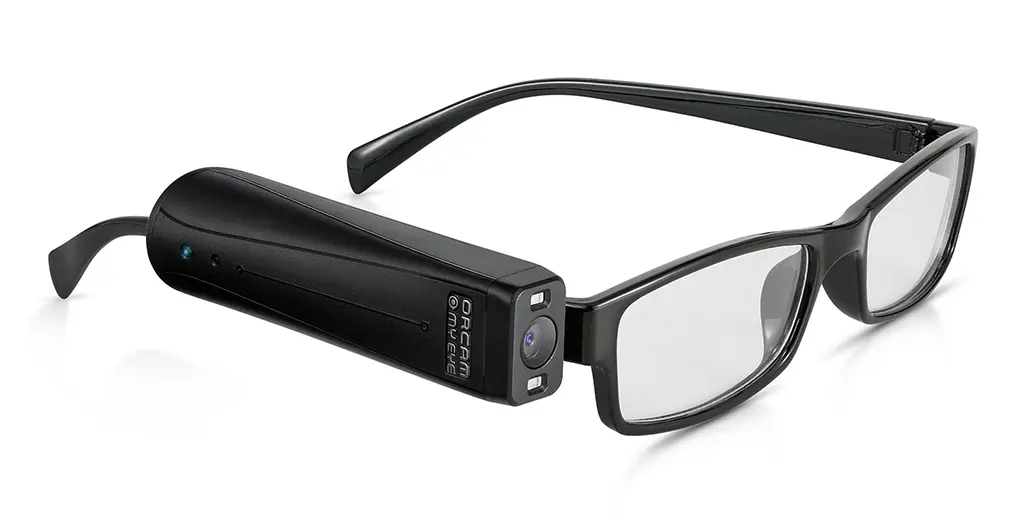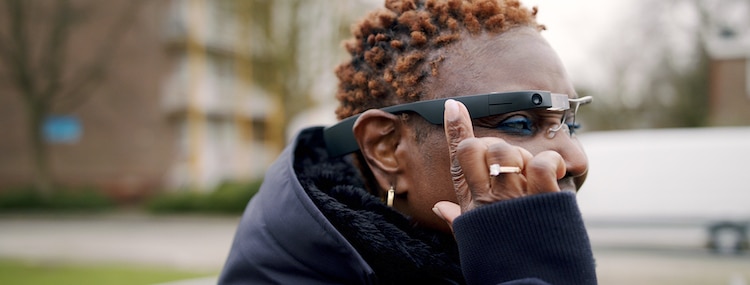Top Braille Displays and Notetakers to Enhance Accessibility for the Blind
Wiki Article
Enhancing Ease Of Access With Assistive Innovation for the Blind
The assimilation of assistive innovation for the blind represents an essential improvement in access, essentially altering how people browse their atmospheres and involve with culture. From display visitors to cutting-edge wise walking canes, these tools not just improve self-reliance but likewise advertise inclusivity in different rounds of life. As we explore the varied types of assistive tools and their concrete effects on day-to-day living, it comes to be important to check out how ongoing technical advancements are reshaping the landscape of assistance for the blind neighborhood. What ramifications do these growths hold for the future of accessibility?Overview of Assistive Technology
Assistive technology refers to a variety of gadgets and software program made to enhance the abilities of individuals with handicaps, consisting of those who are blind or visually impaired. This technology plays an essential duty in advertising freedom and enhancing the lifestyle for customers. By providing different methods for accessing details and carrying out everyday jobs, assistive technology empowers individuals to navigate their atmospheres extra properly.
The development and application of assistive technology welcome a range of principles focused on cultivating access. These principles include user-centered design, which focuses on the needs and choices of the individual, and the integration of technology right into day-to-day activities. Such developments make sure that assistive devices are not only useful however also user-friendly and easy to make use of.
Moreover, assistive modern technology encompasses a diverse range of solutions, from low-tech choices like magnifiers to sophisticated technologies such as screen visitors and Braille display screens. The continuous advancement of this field is driven by the demand to resolve the distinct challenges encountered by people with visual impairments (Wearable technology for low vision). As technology proceeds to advance, the possibility for boosting availability and advertising inclusivity remains encouraging, inevitably adding to a much more equitable culture

Sorts Of Assistive Devices
Countless sorts of assistive tools are readily available to sustain individuals that are blind or visually damaged, each developed to attend to details needs and difficulties. These tools can be extensively categorized into 3 main kinds: low-tech, mid-tech, and high-tech remedies.Low-tech tools consist of products such as magnifiers, Braille tags, and tactile maps. These are reasonably straightforward devices that enhance the customer's ability to connect with their atmosphere without calling for complicated innovation.
Mid-tech gadgets often include much more innovative attributes, such as digital magnifiers and mobile Braille note-takers. These tools can supply functionalities like speech result, allowing users to accessibility details extra efficiently.

Effect On Daily Living
The schedule of various assistive gadgets considerably boosts the high quality of life for people who are aesthetically impaired or blind, impacting their everyday living in extensive means. By incorporating innovations such as screen readers, Braille presents, and audio summary services right into their regimens, customers gain better freedom and independence. These tools facilitate access to details, making it possible for individuals to carry out everyday tasks, such as reading emails, browsing public areas, and delighting see page in media material.Additionally, assistive devices equip individuals to engage even more fully in social communications and eye associates area activities. The capability to make use of mobile phones geared up with availability functions permits smooth communication and connection with others. This connectivity fosters a feeling of belonging and decreases sensations of isolation.
In specialist settings, assistive technology supports efficiency by enabling people to complete work jobs effectively. Tools like voice acknowledgment software program and specialized magnification devices make it possible for users to take part in the labor force on equivalent ground with their sighted peers.

Developments in Modern Technology
Recent technological innovations have actually dramatically transformed the landscape of tools readily available for people that are blind or visually impaired. The integration of fabricated intelligence (AI) and artificial intelligence has given rise to applications that improve navigation and item recognition. For instance, smart device applications can now use AI to identify and define environments in real-time, providing users with beneficial contextual info.In addition, developments in haptic modern technology have caused the advancement of clever walking canes equipped with sensors that discover obstacles and provide tactile comments. This equips users to navigate their environment with increased self-confidence and freedom. Additionally, technologies in text-to-speech software application and braille display screens have improved the access of digital web content, enabling smooth communication with different media.
Wearable modern technologies, such as smart glasses, are also that site making strides in helping aesthetic problems. These tools can offer enhanced reality experiences, superimposing critical info onto the customer's field of vision. Collectively, these improvements not just enhance the lifestyle for individuals who are blind however additionally promote better addition in society. As modern technology proceeds to evolve, the potential for much more transformative tools stays coming up.
Future Trends and Innovations
As modern technology quickly proceeds, the future of assistive tools for individuals who are blind holds tremendous pledge. Technologies in synthetic intelligence (AI) and device understanding are positioned to change the means blind individuals communicate with their atmospheres. For circumstances, AI-driven applications are being established to enhance object recognition, allowing customers to determine and navigate their environments with higher convenience and precision.
Moreover, developments in haptic responses technology are making it possible for the creation of responsive maps and navigating aids that give real-time details through touch. These innovations not only improve mobility but likewise foster self-reliance. In addition, wearable tools outfitted with enhanced reality (AR) features are arising, using individuals aesthetic details through sound descriptions, thus linking the gap in between the electronic and physical worlds.
Moreover, the assimilation of wise home modern technology offers new possibilities for access, allowing individuals to manage their living settings with voice commands or mobile phone applications. As cooperation between technology developers and the blind area continues, the concentrate on user-centered design will make certain that future developments are tailored to fulfill the distinct requirements of this population (Wearable technology for low vision). The trajectory of assistive modern technology promises a more comprehensive and empowering future for people who are blind
Verdict
To conclude, assistive innovation plays an important function in improving availability for individuals with visual disabilities. The varied array of devices, consisting of screen viewers and smart walking canes, considerably improves day-to-day living and promotes independence. Continuous innovations in modern technology and user-centered style make certain that these tools cater properly to the special demands of the blind area. As innovations development, enhanced inclusivity and empowerment can be expected, eventually enhancing the quality of life for those impacted by aesthetic problems.The integration of assistive modern technology for the blind stands for an essential innovation in accessibility, fundamentally modifying exactly how people browse their environments and engage with society.Assistive innovation refers to an array of devices and software program developed to enhance the capabilities of people with disabilities, consisting of those that are blind or aesthetically damaged. Wearable technology for low vision.As innovation swiftly progresses, the future of assistive tools for individuals that are blind holds immense assurance. The trajectory of assistive technology promises a much more inclusive and empowering future for people who are blind
In conclusion, assistive modern technology plays an essential function in enhancing ease of access for individuals with visual problems.
Report this wiki page